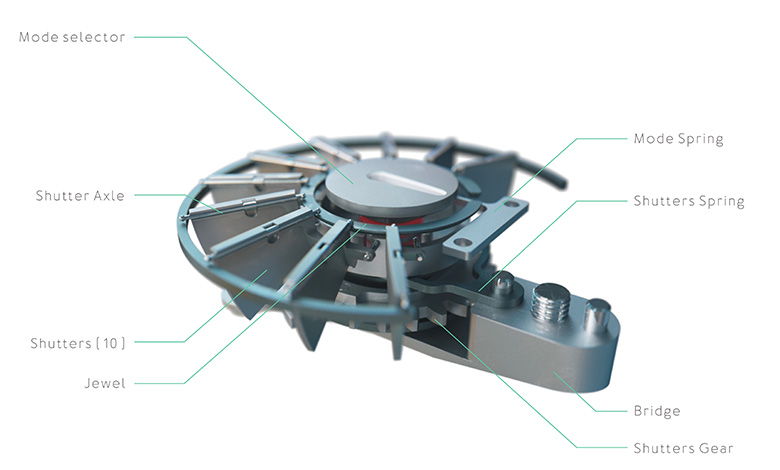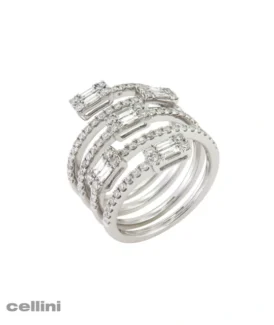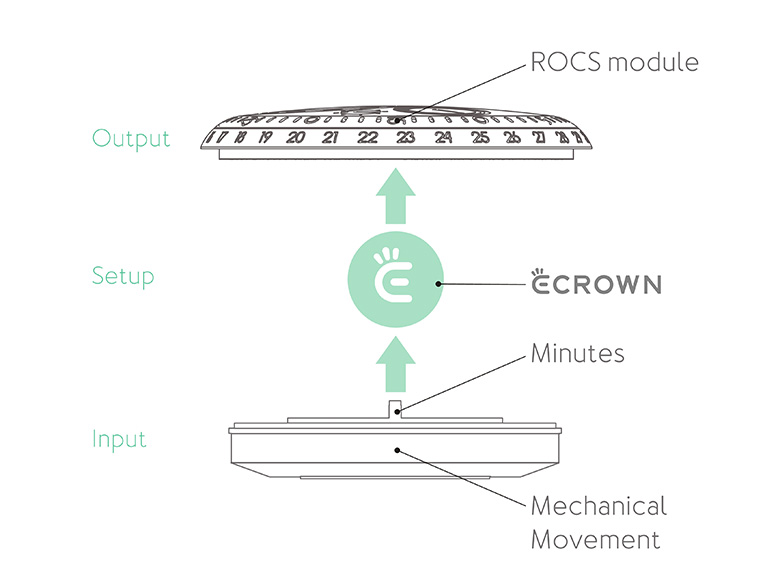
Cellini Interviews Benoît Mintiens About the New Type 2 e-Crown
In late September, Ressence founder Benoît Mintiens visited Cellini to introduce the new Type 2 e-Crown in the U.S. for the very first time.
Like all other Ressence watches, the Type 2 is powered by an automatic-winding mechanical movement and features a continuously rotating dial. What’s different is the addition of a new electronic crown (e-Crown).

When the primary time zone is selected, it’s stored by the e-Crown. This allows the watch to automatically adjust to the correct time when you put it on and tap the crystal – even if the watch hasn’t been worn for three months. That functionality is made possible by photovoltaic solar cells connected to the e-Crown. On the dial, 10 micro-shutters open automatically so outside light can charge the e-Crown.
“I’ve never seen anything like this in watchmaking before. Every brand likes to say that they’re watches are ‘revolutionary,’ but what Ressence has done with the Type 2 e-Crown is truly a game-changer,” says Cellini President Leon Adams.
During Mintiens’ visit to Cellini in September, we spoke to him about Ressence and the new Type 2 e-Crown. Here’s what he had to say.
Part of Ressence’s mission is to make watches that are designed to improve the experience of owning a watch.
It’s definitely a priority. The basis of Ressence is not watchmaking, but industrial design. According to my definition, a good designer is someone who puts the user central and builds a product around them. On the other hand, most engineers in watchmaking start with the mechanism and then make you adapt to what they invent.
For me, a good product adapts to the user. The better you do that, the longer the product stays relevant. Take, for example, computers. When I was a kid, my dad desperately wanted me to work with computers, but I didn’t embrace them right away. He said, “It’s the future. You don’t like it?” I said, “I like it. I just don’t like MS-DOS!”
I didn’t like it because it wasn’t intuitive. Today, kids who are two years old can use an iPad. That’s because the iPad is adapted to the user.
Everything we do at Ressence has to have a physiological reason. For example, there is no traditional crown on our watches. The crown is on the back. That’s because crowns are awkward when they’re big, and impractical when they’re small. They’re hardly ever just right. Whereas, if you put the crown on the back of the watch, it has the scale of your fingers. So, we adapted our crown to the user.
The dial without hands is another example. We use a flat dial because we have two eyes. When you look at a three-dimensional object with two eyes, each eye sees it from a slightly different angle. Then, the brain has to transform these two different images into one to understand what you’re reading. But if you start with a flat dial, the process of understanding what you see is a lot faster.
You may think, “Well, it can’t make a big difference with a watch.” But it really does. Think of it this way: Would you have a book where the words float above the paper instead of being printed on the paper? No, it would take five times as long to read because you would have to focus on each individual word to understand what you’re reading. But that’s exactly what happens with a watch, where the hands float above the dial.
Another reason we adapt our products to the physiology of human beings is that it helps create a positive relationship with the product. For instance, many women dream of owning Louboutin shoes. But when they get them, they realize how uncomfortable they are. Their relationship with the shoes becomes negative and they don’t wear them anymore. The same is true for a watch. If it’s not comfortable, you stop wearing it.
That’s the long-term logic we have at the Ressence. We want your relationship to be positive, so you’ll consider owning another watch from the brand. We cannot invest in publicity around the world because we are such a small brand. But what we can do is make sure our products fit the people who wear them so they develop a positive relationship with them and share their experiences with other people.
By embracing these kinds of creative solutions, you don’t seem to be bound by the same rules as a traditional watchmaker.
I’m not, but I am. I still need to make a watch that can be shown in a watch store. We still want to make watches that you can wear every day. It’s true, we are free, but we restrict ourselves to making something that is recognizable as a traditional watch. It’s a delicate balance we have to follow in the creative process.
All the watches Ressence has released since it started 10 years ago have been powered by an automatic mechanical movement. The same is true for the new Type 2 e-Crown, but it somehow seems like a different animal altogether. How much of a departure is it from what’s come before?
For me, it’s not that different because it still fits within our vision of fine watchmaking. I want to improve the relationship you have with your watch. With the Type 2, we offer more convenience, as well as a kind of trust. Think of it this way: Before electronics were built into cars, you weren’t always sure that your car was going to start right away on a cold and rainy morning. Today, that concern is gone because of the electronics. We are trying to achieve something similar with a watch.
Why keep the mechanical part of the watch at all?
It’s part of the emotional connection we have with our watches. Your empathy toward a mechanical watch is much higher than with a quartz or digital watch. We added some electronics to create more convenience, but we still want to keep the mechanical heart because it maintains that connection.
It’s part mechanical, part electronic. Will consumers confuse the Type 2 with a smartwatch?
I hope not, because it’s not a smartwatch. It’s a mechanical watch. All we’ve done is improve the function of the crown through technology. It’s nothing more than that.

We did need to create some components. The solar cells, for example, were custom-built for us.
One of our biggest challenges, however, was creating a way for the watch to keep track of which function is selected. We tried four or five different technologies before getting the results we wanted. In the end, the solution was to assign each function a color. Then we put those colors on a 1mm rotating disc that is read by a camera. That’s how the watch knows what function is engaged.

Has your concept of watchmaking changed since you founded Ressence in 2009?
When I started, I designed a watch for myself that met three criteria. First, I had to be able to afford it on my salary at the time. Next, it had to be special enough so the press would talk about it because I didn’t have money to invest in advertising. Finally, it needed to be recognizable as a watch. In other words, special, but not too special.
Since then, every watch we’ve made has been a step toward our main goal, which is to create new ways to improve the experience of owning a mechanical watch. The methods and technologies may have evolved, but our vision of fine watchmaking has not.



















